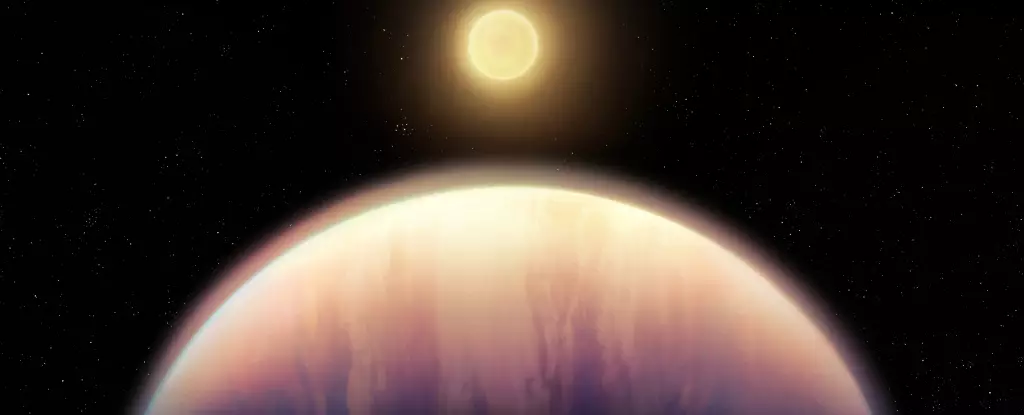The James Webb Space Telescope (JWST) has heralded a new era in our quest for cosmic understanding, specifically in the exploration of exoplanets. This revolutionary instrument is reshaping the landscape of astronomy by providing unprecedented insights into the atmospheres of these distant worlds. For instance, recent observations of gas giants in the HR 8799 system have unveiled the presence of carbon dioxide, offering fresh perspectives on planetary formation. This discovery not only marks a significant step in exoplanet studies but also invites us to reconsider our own solar system’s genesis.
The Enigma of HR 8799
Situated 130 light-years away in the constellation Pegasus, HR 8799 is a stellar system characterized by its dynamic nature. Significantly younger than our Sun, this star boasts about 1.5 times its mass and is a mere 30 million years old—an infant in cosmic terms. What sets HR 8799 apart is its status as one of the first systems to showcase directly imaged planets. Comprising four gigantic gas planets—HR 8799 b, c, d, and e—this system challenges existing paradigms about planetary formation and migration. Orbital distances for these planets range dramatically, spanning from approximately 15 to 70 astronomical units from their star, demanding a comprehensive understanding of their formation mechanisms.
Formation Theories: Core Accretion vs. Disk Instability
Understanding how these magnificent gas giants came to be involves delving into the intricacies of planetary formation theories. The two leading models, core accretion and disk instability, present different narratives. Core accretion posits that solid cores composed of heavier elements gradually accumulate surrounding gas—this is the route theorized for Jupiter and Saturn in our own solar system. Alternatively, disk instability suggests that gas can rapidly coalesce from the cooling disc of a young star. Deciphering which of these processes is predominant in the HR 8799 system has vast implications for classifying planetary systems across the galaxy, thereby enhancing our understanding of planetary diversity.
Technological Triumph: JWST’s Observational Prowess
The JWST’s capabilities are a cornerstone of its success, particularly its NIRCam coronagraph technology, which mitigates the blinding brilliance of host stars. This technological advance allows astronomers to probe the infrared emissions from planets themselves, revealing critical data about their atmospheric composition. The current findings highlight the significant presence of carbon dioxide, suggesting a parallel between the formation of HR 8799’s gas giants and that of Jupiter and Saturn. Such findings reinforce the validity of the core accretion theory, enriching our knowledge of how complex planetary systems can evolve.
A Broader Perspective on Exoplanet Studies
This research extends beyond mere planetary observation; it seeks to contextualize our existence in the vast cosmos. The stakes are high for planetary scientists like William Balmer, who lead these studies with an illuminating vision: “Our hope with this kind of research is to understand our own Solar System, life, and ourselves in comparison to other exoplanetary systems.” By making these connections, we better appreciate our home in the universe and the diverse mechanisms that birth planetary bodies.
The Future of Cosmic Exploration
With nearly 6,000 exoplanets discovered to date, the JWST’s contribution is indispensable in this burgeoning field. Direct imaging of exoplanets remains a rarity due to the stark brightness disparity between a planet and its parent star. The JWST not only further enhances our understanding of distant worlds but also embarks on a broader exploration of our Solar System, seeking answers to fundamental questions that underpin the origins and structures of the universe.
In essence, the James Webb Space Telescope stands as a beacon of innovation in astronomy. It not only pushes the boundaries of our knowledge but also kindles a deeper curiosity about the cosmos, prompting us to explore and question our place within it. As we unravel the mysteries of systems like HR 8799, we are simultaneously piecing together the puzzle of our own solar heritage, and in doing so, enriching the narrative of existence itself.


Leave a Reply